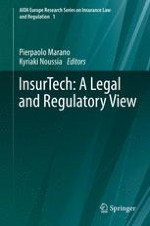2020 | OriginalPaper | Chapter
Ethical Issues, Cybersecurity and Automated Vehicles
Author : Sara Landini
Published in: InsurTech: A Legal and Regulatory View
Publisher: Springer International Publishing
Activate our intelligent search to find suitable subject content or patents.
Select sections of text to find matching patents with Artificial Intelligence. powered by
Select sections of text to find additional relevant content using AI-assisted search. powered by
